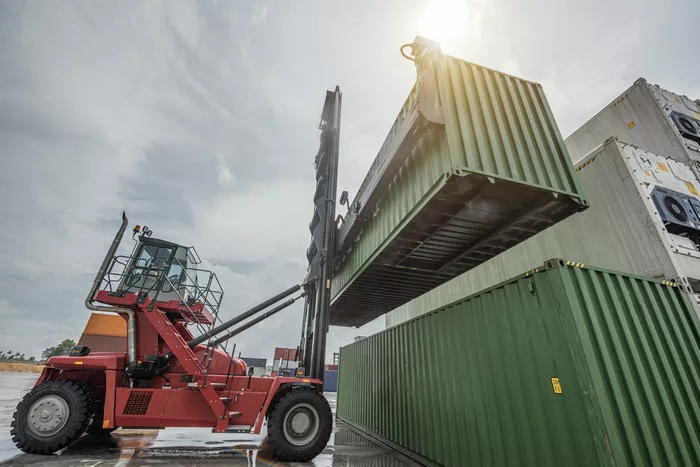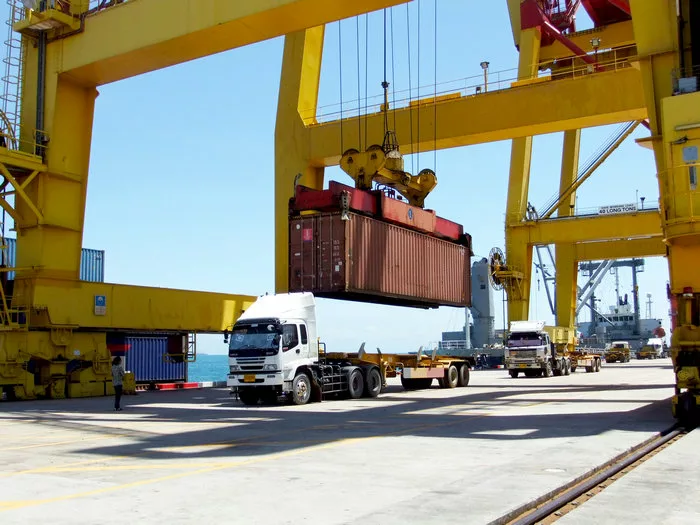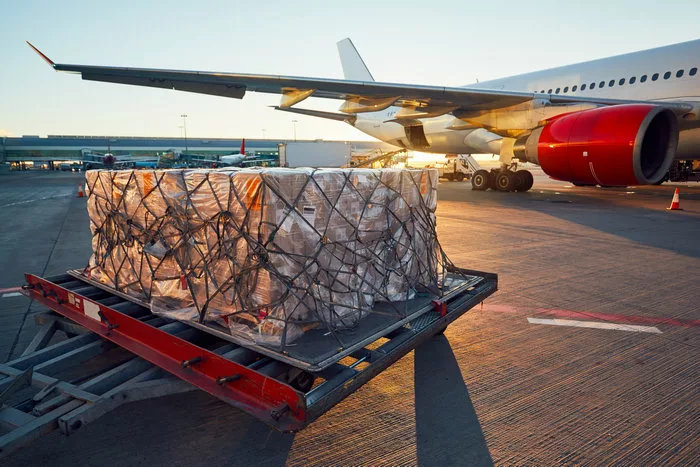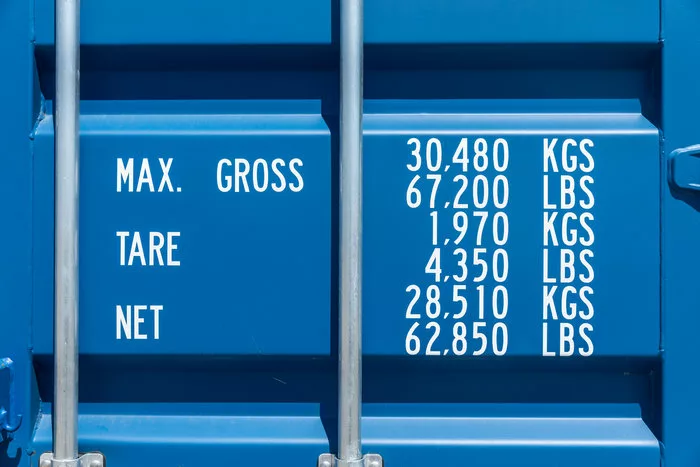In product shipments and logistics, it’s crucial to understand the difference between net weight, which refers to the product’s weight excluding any packaging, and gross weight, the total weight including its packaging or container. This understanding is vital for accurate shipment management and compliance with transportation regulations.

The concept of net and gross weight plays a significant role in shipping, impacting cargo and freight services costs. It also affects packaging decisions, wherein businesses make strategic choices to minimize costs while complying with transportation regulations.
Furthermore, mastering these terms and their calculations can improve the shipping industry’s functionality and ensure a good understanding of global perspectives, documentation, and practical aspects of logistics management.
Key Takeaways
- Net weight refers to the product’s actual weight, while gross weight includes the product and its packaging or container.
- Understanding net and gross weight differences is crucial for cost-effective shipping and compliance with transportation regulations.
- Developing expertise in calculating and managing net and gross weights provides better functionality within the logistics sector.
Understanding Net Weight and Gross Weight
When it comes to shipping and transportation, you should know why net weight and gross weight have different meanings. In this section, you will learn the meanings and importance of these two terms.
Here’s a brief comparison of the two concepts:
Net Weight
- Only the weight of the product
- Excludes packaging and protection materials
- Determined by subtracting the packaging weight from the gross weight
Gross Weight
- Total shipment weight, including product, packaging, and protection materials
- Determines shipping costs and compliance with weight regulations
It is calculated by adding the net weight and packaging weight together. This knowledge will allow you to optimize your shipping process and avoid unexpected costs or compliance issues.
Significance of Net and Gross Weight in Shipping
Both shipping weights play a significant role in determining shipping costs and ensuring the safety of international shipments.

Being aware of these two concepts is essential for you to estimate your shipping costs accurately and select the most suitable mode of transportation for your shipment.
One factor that highlights the importance of distinguishing between net and gross weight is the safety of international shipments.
Overloading vessels can lead to severe consequences, including damage to the cargo or the vessel itself. Knowing the net, gross, and tare (empty container) weights helps avoid overloading and ensures compliance with international safety standards.
Additionally, shipping costs are often influenced by the weight of your shipment. Calculating the net and gross weights can help you estimate the shipping costs.
This information is critical for comparing shipping companies and selecting the best option for your business needs.
Different modes of transport have varying weight limitations and requirements. Depending on your shipment’s gross weight and net weight, some modes of transportation, such as air freight or trucking, are more suitable or cost-effective than others.
Evaluating these weights will guide you in making informed decisions on the most efficient and cost-effective shipping method for your goods.
In summary, calculating gross weight and net value is vital for efficient and cost-effective shipping. Grasping these concepts will help you ensure your shipments’ safety, select the ideal mode of transportation, and accurately estimate shipping costs.
Consider these factors the next time you do international shipments calculating container weight and assessing the shipping process for your business.
How Net and Gross Weight Affects Packaging
As a supplier or a buyer, this knowledge will help you make informed decisions on how to package your products efficiently while meeting shipping requirements and optimizing costs.

Packaging is vital in protecting your products during transportation and ensuring they are delivered in good condition.
While various types of packaging materials may be used, it’s crucial to understand how these materials contribute to the overall weight of the shipment. This is because the combined weight of the product and the packaging can directly affect its transportation costs and overall price.
Consider, for example, that your product is a liquid that needs to be stored in cans, and these cans are further packed into bigger cartons. In this case, both the cans and cartons add to the total weight of the package, resulting in a higher gross weight.
When shipping items in large quantities, it is essential to balance protecting the product and minimizing the packaging materials to keep the gross weight as low as possible while maintaining the desired level of protection.
Additionally, selecting appropriate containers is crucial to optimizing your packaging. When shipping multiple items together in one package, such as pallets, the type of container you choose can significantly affect the gross weight.
Pallets made from a lighter material, like plastic, can reduce the overall weight and potentially save on shipping costs.
By clearly understanding these concepts, you can make better decisions when choosing and designing packaging materials for your products.
Impact on Cargo and Freight
For shippers, understanding weight measurements is essential to influencing billing and delivery arrangements in cargo and freight. This knowledge allows you to accurately calculate shipping costs and abide by the regulations set forth by the IATA and other governing bodies.

When working with a freight company, having an accurate gross weight is crucial so the carrier can optimize their shipping capacity and avoid overloading their vessels or trucks.
Here are some key takeaways on the importance of understanding net weight versus gross weight in cargo transportation:
- Accurate gross weight calculations ensure that your cargo meets transport standards and stays within the legal limits for weight and dimensions.
- An awareness of the net and gross weight allows your selected freight forwarder to assist with proper cargo protection and appropriate equipment suited for your cargo.
- Comparing net weight to gross weight is essential to account for any discrepancies, such as over- or under-reporting weights, which might cause delays, damage, or additional costs. Accurate weight values can also prevent disputes over incorrect weights and billing with freight companies.
In summary, you should have a fundamental understanding of how you can leverage net weight and gross weight when calculating shipping costs. By doing so, you will ensure more efficient and cost-effective transport, maintain compliance with relevant legislation, and establish smoother collaborative relationships with freight forwarders and freight companies.
Weight Calculation
In this section, you’ll learn the basics of the weight of a shipment, including tare weight, total gross weight, and the formulas and relations used to determine these values.
To calculate the net weight, you need to subtract the tare weight from the total gross weight using the following formula:
Net Weight = Total Gross Weight – Tare Weight
For example, if you have a packaged product with a total gross weight of 50 kg, and the packaging has a tare weight of 5 kg, the net weight of the product would be:
Net Weight = 50 kg (Total Gross Weight) – 5 kg (Tare Weight) = 45 kg
To calculate the total gross weight, you need to add the net weight and tare weight:
Total Gross Weight = Net Weight + Tare Weight
Using the same example, if the net weight of the product is 45 kg and the tare weight of the packaging is 5 kg, the total gross weight would be:
Total Gross Weight = 45 kg (Net Weight) + 5 kg (Tare Weight) = 50 kg
Understanding the relation between net weight, gross weight, and tare weight is essential for accurate weight declarations when shipping products, as it ensures that vehicles are not overloaded and that the correct shipping costs are applied.
Also, always remember to calculate the net, gross, and tare weights in your weight declarations and use the provided formulas and relations to make accurate calculations.
By mastering these concepts, you’ll be able to confidently and effortlessly handle any challenges related to weight calculation for your shipments.
Regulatory Compliances
In shipping and transportation, complying with regulations regarding net and gross weight is crucial. These regulations ensure the safety and proper documentation of shipments and are enforced by various authorities.

One primary document related to shipments is the Bill of Lading, which serves as a contract between the shipper and the carrier.
This document must include accurate information about the net weight (weight of the cargo without packaging) and the gross weight (weight of the cargo with its packaging). Providing accurate weight information on the Bill of Lading helps avoid potential shipment fines and delays.
Customs declarations also require precise reporting of net and gross weight for international shipments. These documents are essential to ensure proper duties and taxes calculation, making it necessary to declare accurate cargo weights. Failure to do so may result in fines, delays, or even seizure of goods.
Each country has different container weight limits based on capacities and transport modes. For example, the United States Food and Drug Administration (FDA) sets guidelines for declaring the net quantity of contents by weight, measure, or numerical count for specific packaged food items.
Similarly, the Food Safety and Inspection Service (FSIS) provides rules for determining net weight compliance on packaged food products.
Abiding by these regulations helps maintain safety and efficiency within the transportation industry. As a shipper or carrier, you must familiarize yourself with these regulations and ensure compliance at each stage of the shipping process.
By understanding and complying with the regulations related to net and gross weights, you’ll be better equipped to avoid fines and delays, calculate accurate shipping costs, and maintain safety during your shipping endeavors.
Frequently Asked Questions
1. How can one determine the tare weight from the given values?
Tare weight is the weight of the packaging or container without the cargo or product. To determine tare weight, subtract the net weight from the gross weight:
Tare Weight = Gross Weight – Net Weight
2. What is the best way to calculate net weight when given dimensions?
It would be best to determine the object’s volume first to calculate net weight from dimensions. Multiply the object’s length, width, and height to get the volume. Then, multiply the volume by the density of the object’s material to obtain its net weight.
Net Weight = Volume × Density
Remember that this method’s accuracy depends on the density of the object’s material, which may vary from one product to another, and must be in appropriate units to give weight from volume.
3. Which factors make net weight significant?
Net weight is significant because it helps calculate the actual weight of the product itself, excluding packaging and containers. This measurement is crucial in logistics, transportation, and shipping because it allows companies to optimize packaging, evaluate transportation costs, and comply with weight-based regulations. Moreover, international trade often uses net weight, where tariffs and duties depend on product weight.
4. In what scenarios is gross weight more relevant than net weight?
Gross weight becomes more relevant than net weight in scenarios where the total weight, including packaging and containers, matters. This is often the case when dealing with transportation capacity, shipping regulations, and warehouse management. Determining gross weight can help avoid overloading vehicles, staying compliant with weight restrictions, and optimizing warehouse space.
Conclusion

Understanding the distinctions between net and gross weights is vital in managing costs and adhering to shipping regulations. These weights play a pivotal role in determining shipping costs and vessel capacity.
When preparing to ship products, it’s important to remember that both net and gross weights determine the cost and the vessel’s capacity. Misunderstanding them may lead to costly errors or even compliance issues.
Also, remember that these weights are required for proper documentation, such as quotes, paperwork, and bills of lading.
Hire Us for Freight Shipping Today
Please send us a message via the customer contact form on our website to get expert advice for your complex shipping processes.
